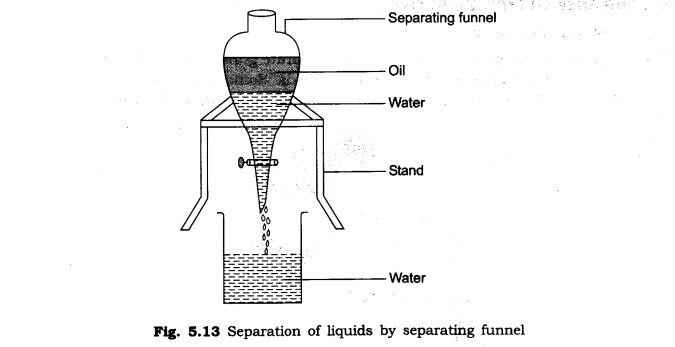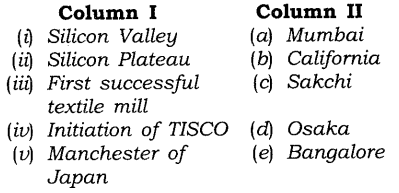EVENTS CONVENT HIGH SCHOOL
12/02/2022 CLASS- 9 SESSION 2021-22
SUBJECT : SOCIAL SCIENCE CIVIC
CHAPTER-5
WORKING OF INSTITUTION
______________________________________
1. TICK THE CORRECT OPTION :-
Question-1
If you are elected as the president of India which of the following decision can you take on your own?
(a) Select the person you like as Prime Minister.
(b) Dismiss a Prime Minister who has a majority in Lok Sabha.
(c) Ask for reconsideration of a bill passed by both the Houses.
(d) Nominate the leaders of your choice to the Council of Ministers.
Solution:
(c) Ask for reconsideration of a bill passed by both the Houses.
Question-2
Who among the following is a part of the political executive ?
(a) District Collector
(b) Secretary of the Ministry of Home Affairs.
(c) Home Minister
(d) Director General of Police
Solution:
(c) Home Minister.
Question-3
Which of the following statements about the judiciary is false ?
(a) Every law passed by the parliament needs approval of the Supreme Court.
(b) Judiciary can strike down a law if it goes against the spirit of the Constitution.
(c) Judiciary is independent of the Executive.
(d) Any citizen can approach the courts if her rights are violated.
Solution:
(a) Every law passed by the Parliament needs approval of the Supreme Court.
Question-4
Which of the following institutions can make changes to an existing law of the country?
(a) The Supreme Court
(b) The President
(c) The Prime Minister
(d) The Parliament
Solution:
(d) The Parliament
Match the ministry with the news that the ministry may have released.
| (a) A new policy is being made to increase the jute exports from the country. | (i) Ministry of Defence |
| (b) Telephone services will be made more accessible to rural areas. | (ii) Ministry of Agriculture, Food and Public Distribution |
| (c) The price of rice and wheat sold under the Public Distribution System will go down. | (iii) Ministry of Health |
| (d) A pulse polio campaign will be launched. | (iv) Ministry of Commerce and Industry |
| (e) The allowances of the soldiers posted on high altitudes will be increased. | (v) Ministry of Communications and Information Technology. |
Solution:
| (a) A new policy is being made to increase the jute exports from the country. | (iv) Ministry of Commerce and Industry |
| (b) Telephone services will be made more accessible to rural areas. | (v) Ministry of Communications and Information Technology |
| (c) The price of rice and wheat sold under the public distribution system will go down. | (ii) Ministry of Agriculture, Food and Public Distribution |
| (d) A pulse polio campaign will be launched | (iii) Ministry of Health |
| (e) The allowances of soldiers posted on high altitudes will be increased | (i) Ministry of Defence |
Very Short Answer Type Questions
Question 1.Name the three organs of the Government.
Answer:
- Executive
- Legislative
- Judiciary
Question 2.Who is the head of the state and the head of the government?
Answer:
The President is the head of the state whereas Prime Minister is the head of the government.
Question 3.What is a Parliament? Name the two houses of the Parliament.
Answer:
It is the supreme law making body of India. It has two Houses :
- Lok Sabha
- Rajya Sabha.
Question 4.What are institutions?
Answer:
The arrangements which are made in modern democracies to run the government.
Question 5.Name any three institutions responsible to run the democratic government in India.
Answer:
- The Prime Minister and the Cabinet.
- The Civil Servant.
- The Supreme Court.
Question 6.Name the institution where disputes between citizens and the government are finally settled.
Answer:
The Supreme Court.
Question 7.Why democratic governments insist on institutions? Give two reasons.
Answer:
- Institutions involve rules and regulations.
- Institutions bind the hands of the rulers as these involve meetings, committees and routines.
Short Answer Type Questions
Question-1 Why is the Prime Minister in India not directly elected by the people? Choose the most appropriate answer and give reasons for your choice.
(a) In a parliamentary democracy only the leader of the majority party in the Lok Sabha can become the Prime Minister.
(b) Lok Sabha can remove the Prime Minister and the Council of Minister even before the expiry of their term.
(c) Since the Prime Minister in appointed by the president there is no need for it.
(d) Direct election of the Prime Minister will involve a lot of expenditure on the election.
Solution:
The most appropriate answer is (a).
This is because, in India, only the leader of the majority party/parties in the Lok Sabha can become the Prime Minister. Moreover, if the directly elected Prime Minister who does not have the support of the majority is appointed as the Prime Minister, there are chances that policies or laws suggested by him would not be passed in the Lok Sabha. This would lead to the government being run ineffectively.
Question-2 Three friends went to watch a film that showed the hero becoming Chief Minister for a day and making big changes in the state. Imran said this is what the country needs. Rizwan said this kind of a personal rule without institutions is dangerous. Shankar said all this is a fantasy. No minister can do anything in one day. What would be your reaction to such a film?
Solution:
I would choose to have a majority in the Lok Sabha, as the Lok Sabha is more powerful than the Rajya Sabha because:
- If any law is not passed by both the houses, the final decision is taken in the joint session in which members of both the houses sit together but because of the larger number of members, the view of the Lok Sabha is likely to prevail.
- The Lok Sabha exercises more powers in money matters too. Once the Lok Sabha passes the budget of the government or any other money-related law, the Rajya Sabha cannot reject it.
- Most importantly, the Lok Sabha controls the Council of Ministers. If the majority of the Lok Sabha members say they have no confidence in the Council of Ministers, it has to quit, whereas the Rajya Sabha does not have this power.
Question3 A teacher was making preparations for a mock parliament. She called two students to act as leaders of two political parties. She gave them an option: Each one could choose to have a majority either in the mock Lok Sabha or in the mock Rajya Sabha. If this choice was given to you, which one would you choose and why?
Solution:
I would choose to have a majority in the mock Lok Sabha. This is because of the following reasons:
- The leader of the Lok Sabha is directly answerable to the public, as they are directly elected by them.
- Any ordinary law needs to be passed by both the houses. However, in an undecided situation, the decision of Lok Sabha always prevails due to more members.
- Lok Sabha exercises more power in cases related to money bills as they originate here.
- The Council of Ministers is controlled by the Lok Sabha.
- Lok Sabha has more powers compared to the Rajya Sabha.



